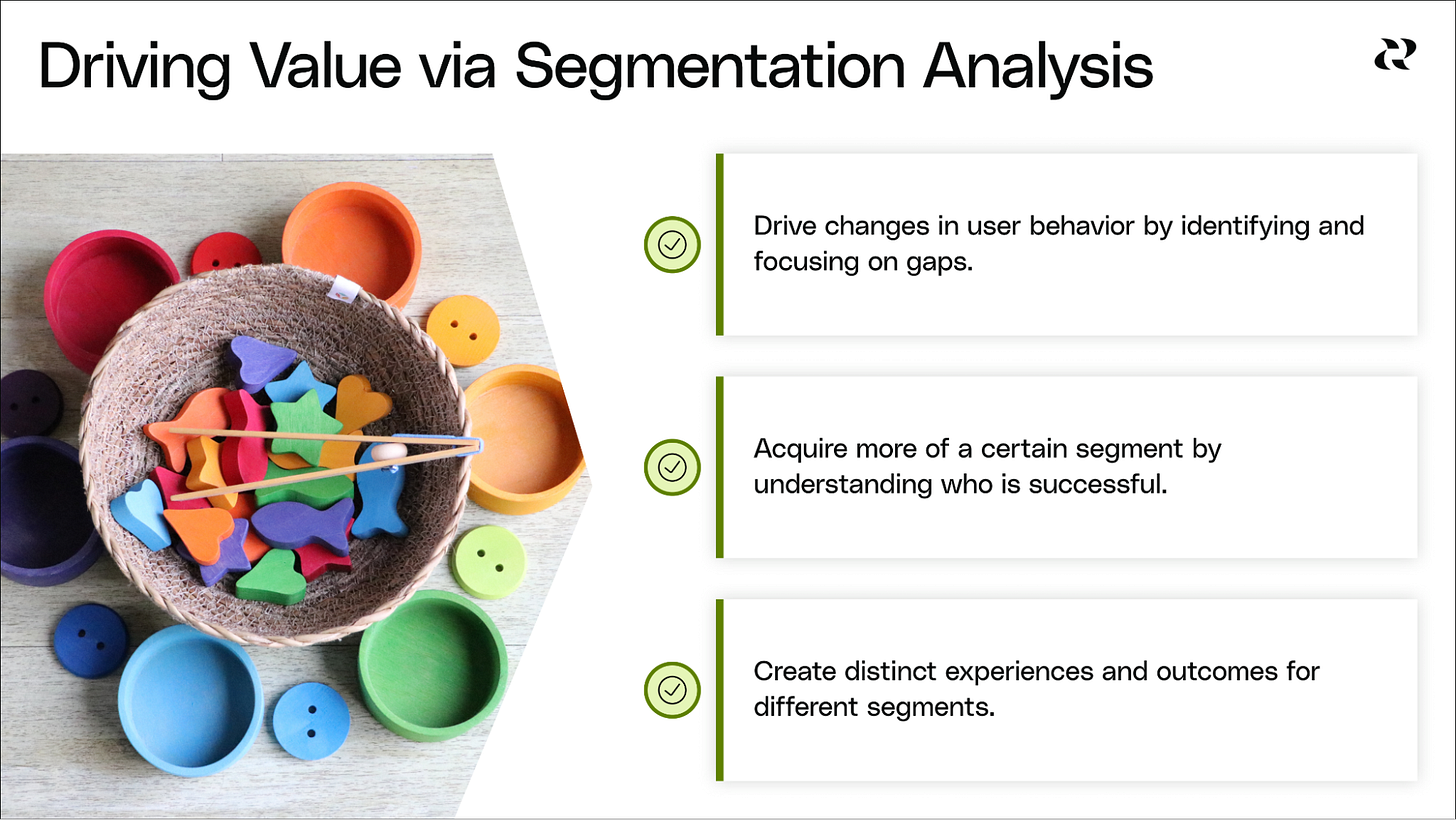9. The Holy Grail of Marketing: Segmentation
The most incredible tool to find market and customer insights
“I cannot give you the formula for success, but I can give you the formula for failure - which is: Try to please everybody.”
The secret to success as a brand lies in finding a market segment whose needs your product can meet perfectly. My previous newsletter on clustering touched upon segmentation, which I believe is the most essential idea in marketing.
Segmentation is fundamental and, in many ways, critical to generating customer aha moments using behavioral and data science. A business that ignores segmentation is likely leaving value on the table.
Customer segmentation divides a base into groups based on shared characteristics. These characteristics can include demographic information, such as age, gender, income level, and location, as well as behavioral data, such as purchase history, product preferences, and interests.
By dividing customers into segments and understanding them better, you can:
Build products and services to meet the needs of each group better.
Create more targeted marketing campaigns that are more likely to be successful.
Curate a more personalized product experience to increase customer engagement.
It’s a very powerful tool to:
Create products with the features desired by the target segment.
Optimize the time, place, and messaging of marketing campaigns.
The three most common segmentation approaches are:
Psychographic - This is based on their shared interests, needs, and attitudes. It’s the best way to find the why behind customer behavior and distinct needs that exist in the market. However, collecting this data needs a lot of market research resources. Also, this segmentation is hard to use for targeting. Mailchimp provides a very detailed analysis of this type of segmentation.
Demographic - This is based on age group, gender, location, education, employment, etc. This data is easier to collect and target but lacks deep insights into customer behavior or preferences. Learn more about this here.
Behavioral - Based on product usage patterns, such as purchase history, product usage frequency, brand loyalty, and user status. This data is more accessible than psychographics but does not always provide insights into the 'why' behind the actions. It’s excellent for personalization and customer retention. Learn more about this type of segmentation here.
Since all three methods have pros and cons, the best approach is to use a combination of the three - called a Hybrid segmentation. The choice depends on the business objective you are trying to achieve. For example, Monzo Bank uses the following strategy for segmentation -
In Business banking, the product teams use psychographic segmentation to understand the needs clusters of small businesses.
In Personal banking, behavioral segmentation is used to track and understand different states of customer engagement to personalize their product experience.
In Wealth Management, psychographic segmentation is used to gain deeper insights into people's risk appetites and attitudes toward saving and investing money.
Segmentation can help you find surprising insights from the data, as Stanley discovered when it deep-dived into the needs of women, a segment it had traditionally overlooked. It’s a MUST-HAVE quill in every marketer’s quiver.



